What Are Numbers?
A number is an arithmetic value used to represent quantity. Hence, a number is a mathematical concept used to count, measure, and label. Thus, numbers form the basis of mathematics.
For example, this is 1 butterfly and these are 4 butterflies.

Recommended Games
History of Numbers
The inscriptions found at archaeological sites show that early humans used various symbols to show numbers. For example, ancient farmers, traders, and merchants used tally marks to show quantities. In tally marks, a standing line is drawn for each count and the fifth count is shown by striking off the four lines. This, however, was a tedious way and it was not feasible to show quantities.
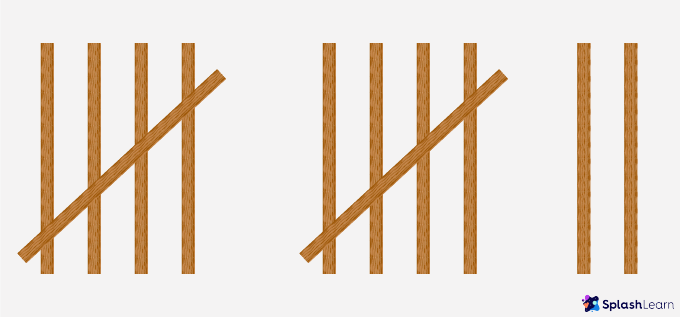
Different ways of writing numbers were brought to use with the development of early civilizations. They used different symbols to show larger quantities. But even with these systems, it was not easy to show large quantities.
Around the seventh century, a decimal (or base ten) positional method, was perfected in India. This method used ten unique symbols to represent any number or quantity. These symbols are 0, 1, 2, 3, 4, 5 6, 7, 8, and 9.
This system was spread across Europe by the Arab merchants, scholars, and conquerors.
This system is called the Hindu–Arabic numeral system, and it remains the most common system for representing numbers to date.
Recommended Worksheets
Numbers in Everyday Life
Numbers are used everywhere around us. Your birthday has numbers that tell the day, month, and year you were born.
Numbers are used to keep track of time. We use clocks that show us time. We plan our day and events according to time.
Numbers are involved in buying and selling too. To count money and the units of an item, we use numbers.
Numbers are used for measurement. Temperature, weight, length, capacity, speed, distance, area, volume, and so on are measured using numbers.
Numbers play an important role in our body too. We have 2 eyes, 2 ears, 1 nose, 2 hands, 2 legs, and an adult body has 206 bones.
Our houses have numbers, bank accounts have numbers, and so do our cars, buses, trains, and flights.
Number Representation
- Digits 0-9
A number system is a writing system for denoting numbers using digits or symbols in a logical manner.
We use the digits from 0 to 9 to form all other numbers.
With the help of these digits, we can create infinite numbers.
For example, 121; 34,987; 2,987,633; 459,227,904; …
This number system using 10 digits is called the Decimal Number System.
- Alphabetical Form of Number
Number words are the alphabetical form of numbers. As the name suggests, these are numbers written in words.
For example:
1 One
2 Two
15 Fifteen
33 Thirty-three
- Symbolically, Using Numerals
Numerical symbols are numerals, such as Hindu-Arabic numerals (for example: 112, 415, 999) or Roman numerals (I, II, V, VIII).
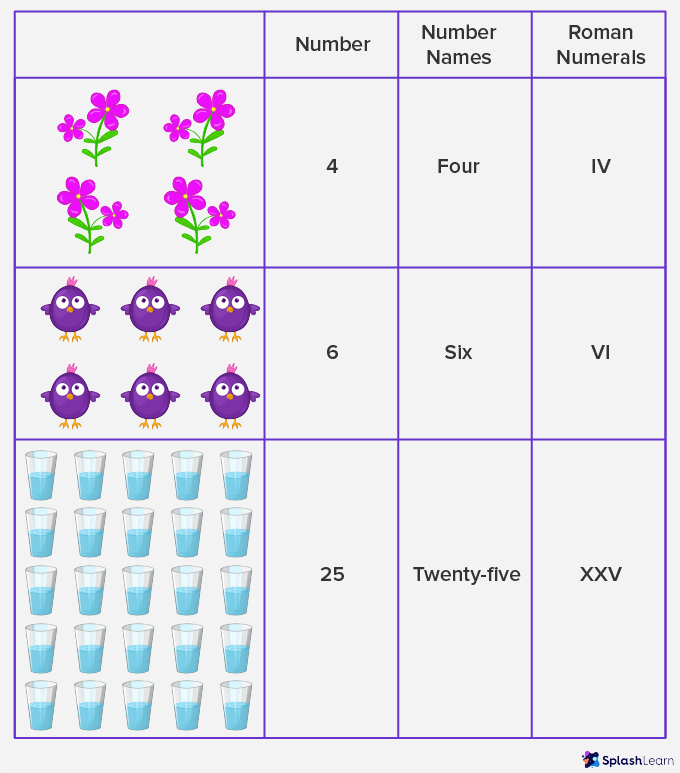
Cardinal Numbers and Ordinal Numbers
Cardinal numbers are counting numbers. The numbers that we use for counting are called cardinal numbers.
Cardinal numbers tell us how many things, items, or objects are there.
Example: 1, 2, 3, 10, 158
Ordinal numbers give us the exact position of a thing, item, or an object in the list. Ordinal numbers tell the position of an object rather than its quantity.
Example: 1st, 2nd, 3rd, 9th, 150th
Types of Numbers
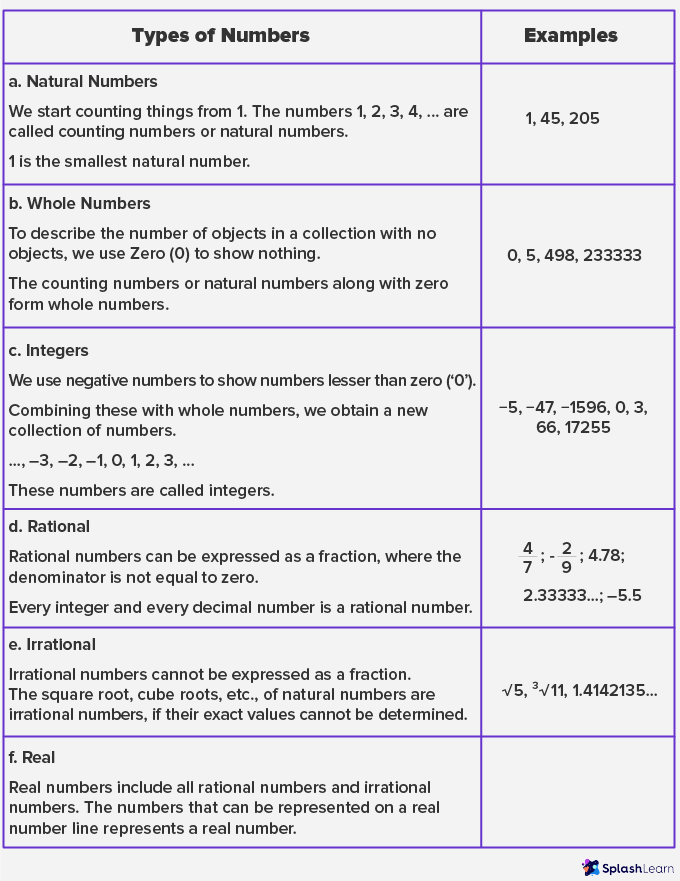
Apart from the above, there exist other numbers, namely even and odd numbers, prime numbers, and composite numbers. These can be defined as follows:
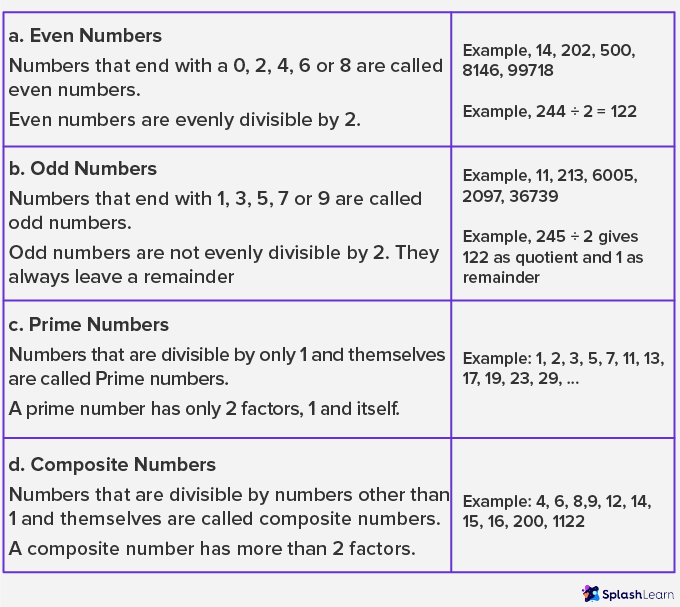
Fraction and Decimal Numbers:
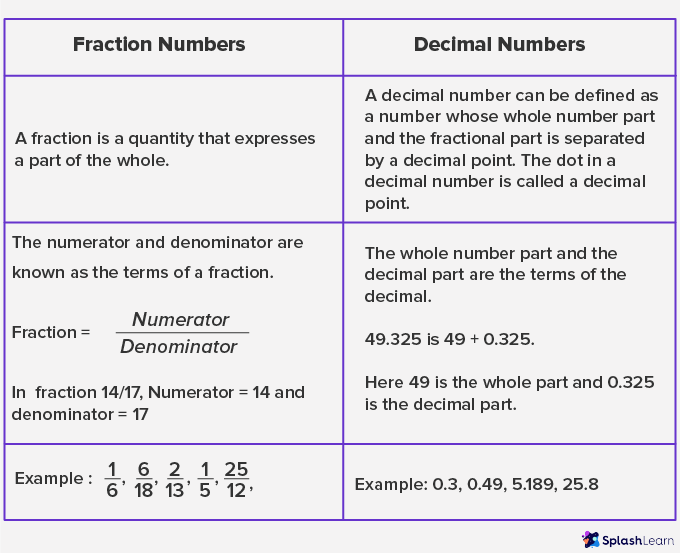
Solved Examples on Numbers
Example 1: Classify the given set of numbers as fractions or decimals.
7/12; 0.0008; 1.52; 100/10; 4 1/2; 7555.0
Solution:

Example 2: Write the numerator and denominator of given rational numbers.
- 17/21 (b) 4/5 (c) 25/22
Solution:
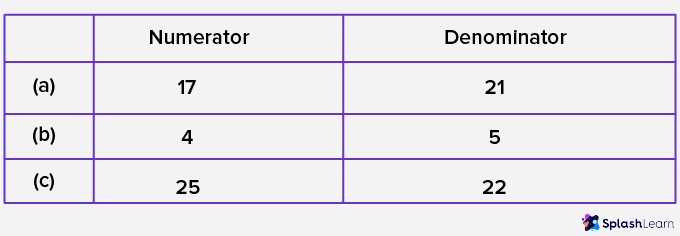
Example 3: Write the numbers in words.
- 548
- 1,660
Solution:
- Five hundred and forty-eight.
- One thousand six hundred and sixty.
Practice Problems On Numbers
Numbers
How many odd numbers are there between 64 and 90?
65, 67, 69, 71, 73, 75, 77, 79, 81, 83, 85, 87, 89
Sum of the numbers of primes between 10 to 20 and 30 to 40 is
Prime numbers between 10 to 20 are 11, 13, 17 and 19 So, there are 4 prime numbers between 10 to 20. Prime numbers between 30 to 40 are 31 and 37 So, there are 2 prime numbers between 30 to 40. Sum = 4 + 2 = 6
Four thousand eight hundred and eight in numeral form is written as:
4,000 + 800 + 8 = 4,808
What type of number is –5?
–5 is a negative number, so it’s an integer.
Frequently Asked Questions On Numbers
How do you find if a number is odd or even?
If a number is divisible by 2 with no remainder, then it is an even number. If a number is divided by 2 and leaves the remainder 1, then it is an odd number.
Is zero an even number?
When zero is divided by 2, the quotient is 0 and remainder is also 0. So, zero is an even number.
Can rational numbers be negative?
Yes, rational numbers are classified as positive, zero, or negative rational numbers.
Do fractions count as whole numbers?
Whole numbers do not include fractions or decimals.




































